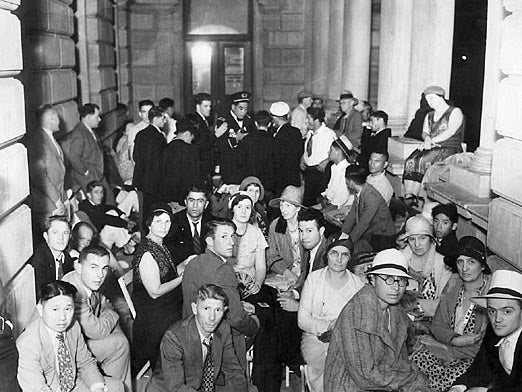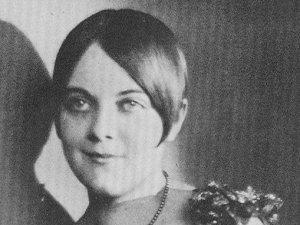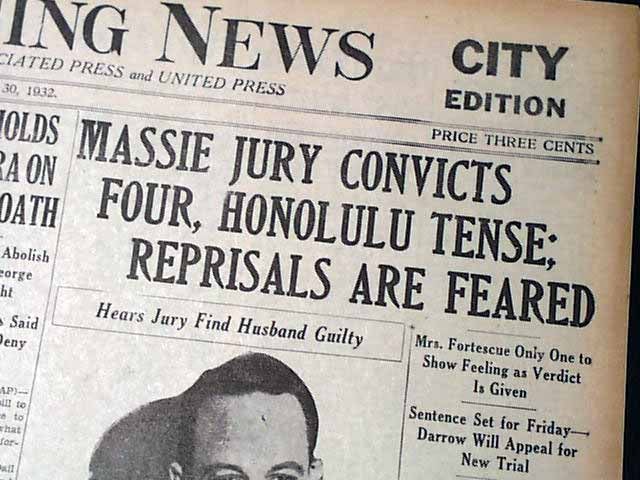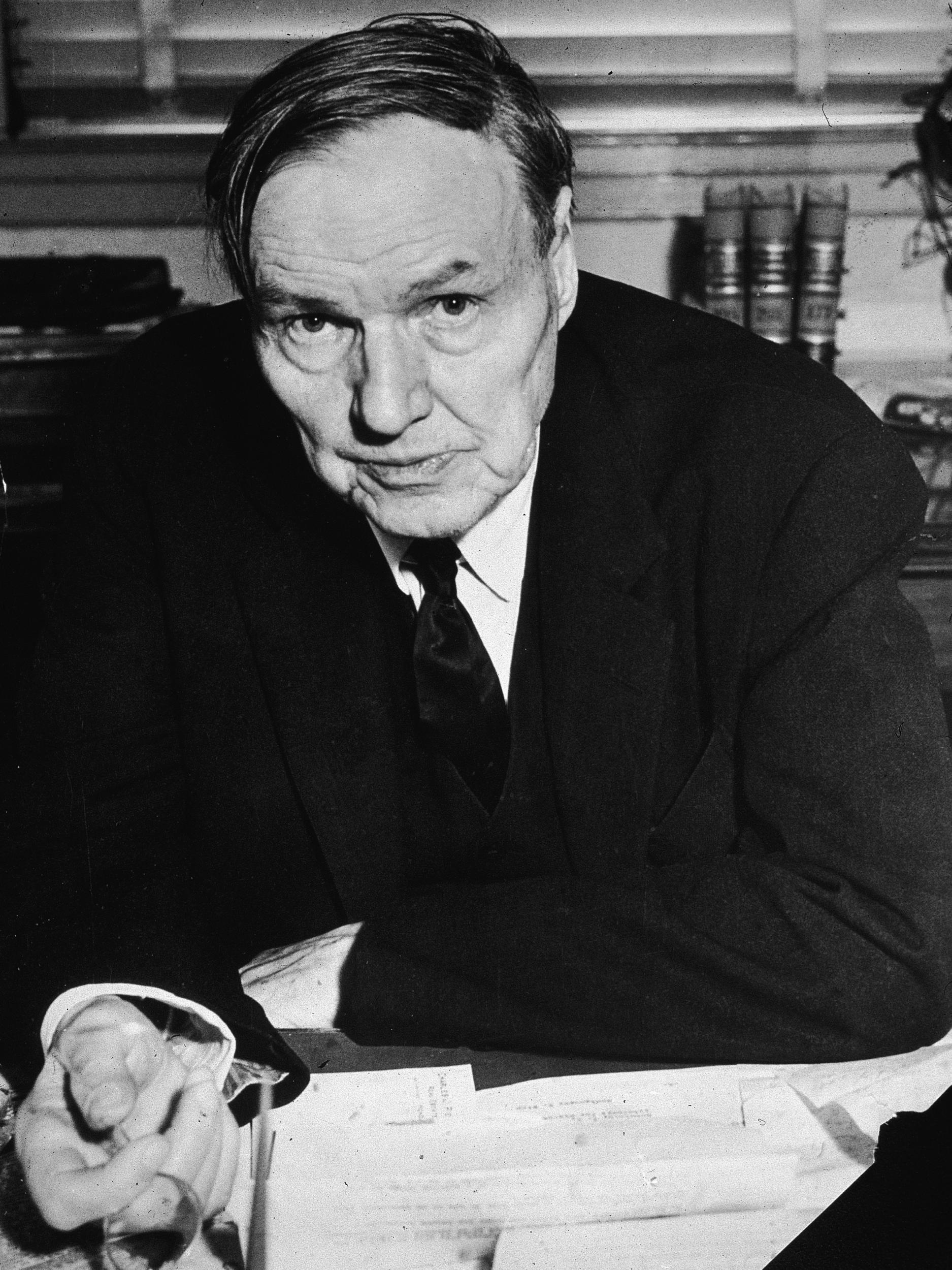Paradise lost: Hawaii's scandalous Thalia Massie trial
What really happened to a young naval wife in 1931 remains a mystery. But what happened after: racism, violence, torture and lynching – at the hands of the US – is still all too familiar

Your support helps us to tell the story
This election is still a dead heat, according to most polls. In a fight with such wafer-thin margins, we need reporters on the ground talking to the people Trump and Harris are courting. Your support allows us to keep sending journalists to the story.
The Independent is trusted by 27 million Americans from across the entire political spectrum every month. Unlike many other quality news outlets, we choose not to lock you out of our reporting and analysis with paywalls. But quality journalism must still be paid for.
Help us keep bring these critical stories to light. Your support makes all the difference.
She was not a party girl. And her husband made the mistake of trying to turn her into one. So I guess you could say that she got her own back.
The Thalia Massie affair, and the subsequent trials, were as scandalous in 1930s America as the kidnapping of Lindbergh’s son. A heady cocktail of rape, racism, lynching, and quasi-judicial pardoning – it all seems still very much of our era. And the fact that it all happened in Hawaii bestows on these unforgotten events the aura of a paradise lost.
“Something terrible has happened,” as Thalia Massie said; in fact, several kinds of something, but it has never been harder to separate the signal from the noise.
What we know for sure is on the night of 12 September 1931, Thalia Massie did not want to go and hang out at the raucous Ala Wai Inn in Honolulu with her husband and his crew. Lieutenant Thomas Hedges Massie, a submariner in the US Navy based in Pearl Harbour, was not to be easily put off' he twisted her arm and she went – albeit with a bad grace, and determined not to enjoy herself. Which she didn’t.
If he had just let her be at their bungalow on Kahawai Street, none of this would have happened. All human misfortune stems from our inability to remain at rest in a room, as Pascal pointed out, or – he might have added – other people’s inability to let us remain at rest. It seems as if we would rather see good people die than tolerate a party pooper. She had recently started taking classes at the University of Hawaii, but this night would see the end of her intellectual aspirations.
The scene at the Ala Wai Inn is also clear. Lieutenant Massie is downstairs, carousing with his Navy buddies. Thalia Massie is upstairs: sulking, stewing, steaming. She may well be wondering why in heaven’s name she got married at the age of 16 – she is now aged 20 – to her diminutive would-be action hero husband.
They were clearly not suited. She was all about thinking or being; he was all about doing, or over-doing. One other incident stands out in my mind, involving a Lieutenant Ralph Stogsdall, popularly known as “Moose”. For one thing, he was a big guy: several inches over six feet tall, with broad shoulders to match. He towered over Lieutenant Massie, for example. But he was upstairs, towering over Thalia.
Perhaps he thought she needed a big guy. He must have made a pass at her, because she was suddenly slapping him around the face and saying to anyone who would listen that he was “no gentleman”.
Sometime before midnight, Thalia Massie leaves the Ala Wai Inn. Alone. She is sick of her husband and the whole US Navy, and stomps off into the night. An hour later, she is picked up by the kindly Eustace Bellinger, stumbling along the side of the road, in a state of “disarray”. She says she has been beaten up by “Hawaiians” and dumped, and asks to be taken back to her house.
When her husband finally returns, she tells him she was not only beaten but raped too – repeatedly, in the area known as Ala Moana, by a group of Hawaiian men. She doesn’t know what they looked like: it was too dark, and no, she didn’t know the number plate of their car either.
The police pick up a carload of likely lads: Hawaiian and Asian. Some of them have criminal records already. One of them, Joe Kahahawai, a local boxer of some eminence, had on the same night punched a local woman in what appears to have been a fit of road rage. They are arrested, held in detention, and paraded before Thalia Massie.
Fairly soon, she is convinced that they had done it and also remembers the number plate, which happened to coincide with the number plate of the car belonging to said Hawaiians – that had just been mentioned to her.

However, the accused Hawaiians were far away from the alleged scene of the crime, and could not possibly have abducted and raped Massie in the time available. Even the Hawaii 5-0, anxious as they were to get a conviction in the case of the rape of a white woman, can’t quite manage to rearrange the geography of Honolulu to cram both Thalia Massie and these supposed “attackers” into the same spot at the same time. So there are doubts, to say the least.
We know that she had a broken jaw. She had definitely been beaten up. But by whom? There is of course no hard evidence, but the likeliest candidate is surely the big guy Ralph Stogsdall, aka Moose.
This is only a hypothesis. But he had a motive – he had been publicly shamed by Thalia, after all. And she was seen later that night, having left the Inn, in close proximity to a party or parties unknown. She said that she heard the nickname “Bull” being used. Not quite “Moose” but not far off.
But of course, it would be embarrassing to say that members of the US Navy were guilty of anything, especially physically assaulting the wife of one of their own. Far easier to blame unspecified “Hawaiians” – referred to as “niggers” by the Commander of the submarine base. But had she even been raped? The doctors who examined her could find no evidence of sexual activity. She had certainly been seriously assaulted, however. And that was enough for the trial to go ahead, despite the precarious evidence against the alleged assailants.
Deep background: Hawaii had already been raped repeatedly. Forced to submit against its will.
“Discovered” by Captain Cook back in the eighteenth century, its population decimated by viruses and venereal disease (hitherto unknown in the islands), it was finally annexed by the United States at the end of the nineteenth century, after a coup against the Hawaiian royal family mounted by wealthy American planters, sugar barons, descendants of the original East Coast missionaries who had sailed there to rectify the morals of the natives.
By the 1930s, indigenous Hawaiians were characterised, at best, as “beach boys” with loose morals, plying their trade along the beaches of Waikiki, and apt to seduce tourists and lonely Naval wives.

Joe Kahahawai and four other men are duly prosecuted in what becomes known as the “Ala Moana trial”. The prosecution, lacking any kind of hard evidence, fails to establish what crime has in fact been committed, let alone that the accused are responsible for it. The jury fails to reach a verdict. The men are released, although there is the possibility of a retrial.
The common view is that not only are the Hawaiians guilty, but they are now the beneficiaries of a cover-up. Which is when action hero Lieutenant Massie, together with Mrs Grace Fortescue, Thalia’s mother, freshly arrived from the mainland, decide to become vigilantes. In the quest for “justice”. It sounds like a Ku Klux Klan narrative: violent, virile black (or “yellow”) men, a white woman, a lynching party; it has all the right ingredients. But it is the American Navy that is the cheerleader.
Admiral William Pratt, chief of naval operations in the Pacific, announces that: “American men will not stand for the violation of their women under any circumstances. For this crime they have taken the matter into their own hands repeatedly when they have felt that the law has failed to do justice.”
Horace Ida, the driver of the car that was supposed to have been involved in the rape of Thalia Massie, is adbucted and worked over, given a thorough kicking and lashing. And his attackers threaten to chuck him off the nearby cliff. He escapes with his life.
Joe Kahahawai is not so lucky. Mrs Fortescue speaks of being obsessed by “his repulsive, black face”. She appears to be the main force behind his abduction and murder. In January 1932, he is kidnapped right by the Honolulu courthouse, in broad daylight, in front of witnesses. Handed some kind of fake “summons”: ill-spelt and amateurish, but enough to enable his kidnappers to shove him into a car and drive him away.
He is taken to Massie’s house, interrogated and tortured with a view to forcing a confession. When he refuses to submit, he is finally shot. Lieutenant Massie, two fellow submariners (both trained boxers) and a bathtub are involved. So the navy guys are extacting revenge for some original crime that may well have been committed by one of their own.
They try to dump the body, but there is a car chase. Massie and his crew are stopped. The body of Joe Kahahawai is found wrapped in a sheet in the back of the car, naked and bound, his bloody clothes alongside him.
The Buick is being driven by Grace Fortescue. Nobody denies anything. They are just a little hazy about some of the details. Mrs Fortescue actually gives an interview to The New York Times before the trial, in which she has no awareness of having done anything wrong.
Admiral Yates Stirling, the commander of Pearl Harbour, says with a tear in his eye: “I stood for a moment at Mrs Fortescue’s side and put an arm around her. My heart went out to this brave mother.” The New York Daily News sends a message of “admiration and sympathy”. A Hearst newspapers editorial thunders about “the perpetration of a crime against womanhood, against society, against civilisation” and declares that: “Hawaii is not a safe place for decent white women.” Admiral Pratt also seems to be subtly defending the killers: “Let your personnel understand that retaliation and reprisal in any form, although oftentimes human, is rarely justifiable – except as a last resort.”

Massie and co all stand trial, initially charged with first-degree murder, watered down to second-degree (ie manslaughter, like: “Oh, sorry, we sort of accidentally killed the guy while torturing him”).
Clarence Darrow, heroic defender of oppressed minorities, now aged 75, is drafted in at great expense for what will be his last case, to defend. The facts are not really in dispute, although there is some debate about who actually pulled the trigger.
Darrow goes for a defence of temporary insanity in the case of the husband, and delivers a four-hour closing speech begging for the sympathy of the jury. But he loses the case. Massie, his mother-in-law and his crew are all found guilty. They are given ten years apiece, but in a dramatic turnaround the governor of Hawaii exercises “executive clemency” and commutes the sentence down to one hour, and a glass of champagne in the governor’s office (some say it was only tea) and they all sail away.
Not quite a “pardon”, as per President Trump’s recent pardon of the racist former Arizona sheriff, Joe Arpaio, but it’s close. The parallels with the better-known Scottsboro Boys case in Alabama, also in 1931 (turned into a play by Sartre and a Kander & Ebb musical), in which nine African-Americans were accused of raping two white women on a train, are obvious.
I was recently reminded of all the above when I went back to a house I used to live in: Point House, on the North Shore of Oahu, at the opposite end of the island to Honolulu, once owned by the very judge who presided over the trial of Massie and Fortescue and associates, and who handed down the sentence – Judge Charles “Skinner” Davis.
And it struck me that this history is not history at all. The mini-mafia that now rules the North Shore, which privileges native or quasi-native “Hawaiians”, draws its strength and cohesion not just from drugs, extortion and racketeering, but from the sense of a grievance against the white military-agricultural aristocracy that has called the shots in Hawaii for over a century. The “aloha” spirit was always a myth anyway, but now it has morphed into something like its opposite.
Something terrible really happened all those years ago in Honolulu, even if we are not quite sure what it was, but it is clear that the stories we have told and keep on telling about other people are also terrible, and will lead us to do yet more terrible things. And you can’t help but think that sometimes it would be better not to tell stories at all.
Andy Martin is the author of Reacher Said Nothing: Lee Child and the Making of Make Me. He teaches at the University of Cambridge
Subscribe to Independent Premium to bookmark this article
Want to bookmark your favourite articles and stories to read or reference later? Start your Independent Premium subscription today.
Join our commenting forum
Join thought-provoking conversations, follow other Independent readers and see their replies
Comments